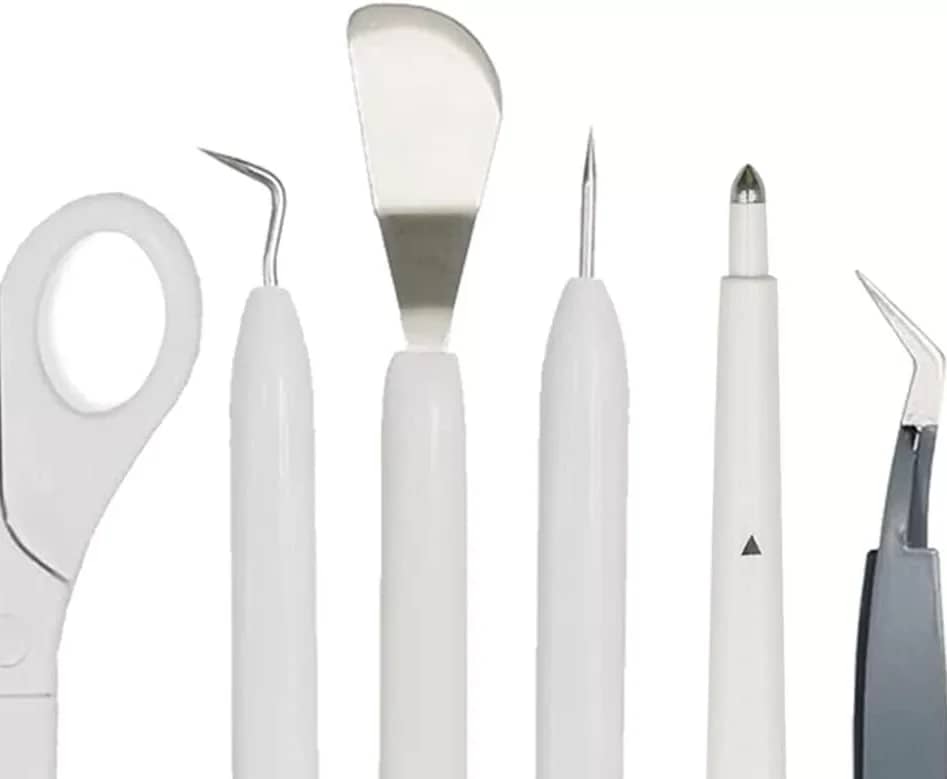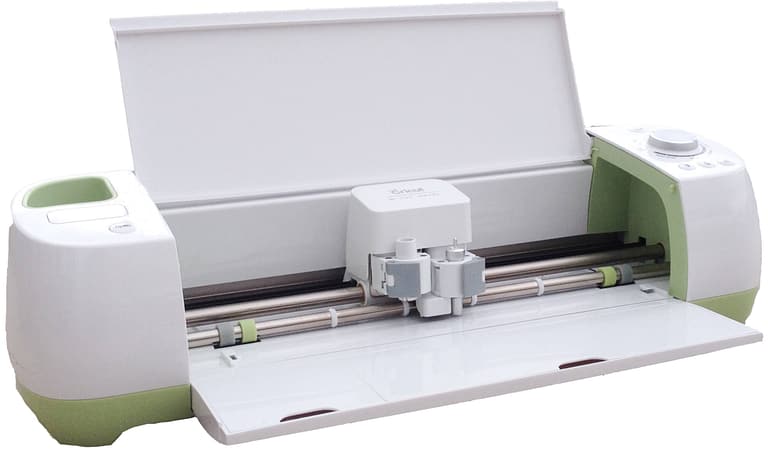How to Choose the Best Die Cutting Machine
Die cutting machines can enhance the work of scrapbook aficionados, quilters, jewelry makers, and party planners. They also make a smart investment for teachers and church group leaders who assign plenty of hands-on arts and crafts projects. Selecting the best die cutting machine for an individual’s needs yields a handy tool that pays for itself while providing hours of crafting fun.
About Die Cutting Machines
The craft of die cutting can be traced back to the Industrial Revolution, which began during the 18th century. During this era, manufacturers started using a process called die cutting to create standardized products. Cobblers used to trace a customer’s feet to create a pattern, and the pattern would then be used as a guideline to hand cut the material needed. During the mid-1800s, however, shoemakers began using a mallet handle die to cut out soles. A piece of leather was placed on a block of wood, then covered with a sharp-edged die. The shoemaker would strike the die with a mallet to cut out a leather sole. This technique was replaced by belt-driven die machines during the late 1800s and swing arm clicker presses around the start of the 20th century. As the name suggests, clicker presses had a moveable arm. Users could swing it aside to easily rearrange materials and dies. Today, the die cutting process is still used to manufacture everything from car parts and keys to jeans and shoes. Small-scale machines also are available for use in homes, churches, schools, and small businesses.
Die cutting machines are the cookie cutters of the arts and crafts world. Instead of cookie dough, however, they punch out shapes from flat materials. People who need a large number of shapes in a short amount of time will appreciate the convenience of owning a die cutting machine. It provides uniform shapes with clean edges in a more efficient manner than hand-cut pieces. Users can save money while creating their own designs. Die cutting machines are often used in conjunction with embossing folders, and oftentimes they are sold together or in one compound machine, like the Sizzix Big Shot Cutting and Embossing Machine, a version of which offers a multipurpose platform. Cuttlebug offers something similar as well.
Materials that Work with Die Cutting Machines
- Cardstock
- Paper
- Cardboard
- Cloth
- Wood
- Light metals
- Thin metal mesh
- Rubber
- Foam
- Plastic
- Vinyl
- Chipboard
- Foil
- Compressed sponges
Die Cutting Machine Projects
- Place card settings
- Greeting cards
- Gift tags
- Gift bags
- Photo frames
- Photo mats
- Bulletin board decorations
- Posters
- Collages
- Stickers
- Customized stationary
- Wall art
- Faux flowers
- Paper dolls and clothing
- Party decorations
- Party favor containers
- Quilting pieces
- Place mats
- Knee and elbow patches
- Earrings
- Necklaces
- Bracelets
- Jigsaw puzzles
Types of Die Cutting Machines
Companies like Cricut, Provo Craft, Sizzix, Xyron, Spellbinders, BossKut, and QuicKutz offer a wide array of die cutting machines. Another popular machine is the Diamond Press, an embosser and die cutting machine offered by Crafter’s Companion.
Manual Die Cutting Machines
People who own manual models must turn a crank or handle to operate the machine. The user sandwiches a die, or image, and a sheet of paper between two plastic plates. The operator feeds the plates through the machine by turning the crank, which is usually on the side of the machine. After removing the top plate, the user gently removes the cutout. Manual models may not include as many functions as electronic and computer-driven die cutting machines. Manual die cutting machines may not make the best choice for people who suffer from arthritis or carpal tunnel syndrome. The primary advantage, however, is that they are easy to use.
Electronic Die Cutting Machine
Electronic die cutting machines are stand-alone models, which means they operate without a computer; they just plug into an electrical outlet. Simple versions are just like the manual die cutters, except they use a push button to feed the plates through the machine. More complex electronic die cutting machines require cartridges instead of dies. Each cartridge may hold hundreds of images, which usually focus on specific themes.
Computers and Die Cutting Machines
Digital die cutting machines that connect to computers are the most sophisticated models. Such machines usually can replicate any of the fonts, illustrations and shapes already stored on one’s computer, making it ideal for design gurus. The software that comes with digital die cutters allows the crafter to design custom patterns and to trade files with other online users with the same software. While computer-driven die cutting machines tend to be the most expensive choice, users do not need to buy extra cartridges, because they can do so digitally.
More complicated models, while initially daunting, often come with DVDs and detailed guide books. Shoppers wary of digital models can look for companies that offer helpful websites with plenty of online videos and how-to guides.
Choosing a Die Cutting Machine
Like any other product, selecting the right die cutting machine depends on several factors. Consider the factors of budget, most frequent project requirements, and physical and technical abilities before buying a die cutting machine. Also consider whether the software and design share aspects would be of use, and whether or not they would improve the overall craft.
Cost
New die cutting machines can range in price from less than $50 to upwards of $1,000. However, expensive models usually are more suitable for serious crafters, artists, designers, and business owners. Shoppers also should consider their long-term budget in addition to the initial investment in a die cutting machine. Buying such supplies as high-quality paper, replacement blades, dies, cartridges, and cutting mats can become quite expensive.
Consider buying a used die cutting machine if the desired model is too expensive brand-new. Compare a seller’s asking price to the cost of a new model to avoid paying too much. Research the seller’s reputation: Previous customers often rate online sellers.
Size
Die cutting machines come in a variety of sizes, from small manual models with carrying handles to large digital machines that require a computer hookup. Potential buyers should decide whether they prefer a portable machine they can easily take to a friend’s house or a sturdy model that stays in one place.
Accessories
New die cutting machines may include a starter kit. However, most die cutting machine owners invest in additional dies or cartridges. A bundle of two, three, or four cartridges can cost hundreds of dollars. Die cutting tool kits also are available, and they usually include such items as a carrying case, ruler, scissors, and a spatula, which helps remove more intricate cutouts without tearing them. Research prices for accessories like carrying cases and cartridge storage binders, as well as templates, patterns, and stencils..
Die Cutting Machine Considerations
Die Cutting Materials
Potential buyers need to pick models that can handle their crafting materials. For example, certain die cutting machines are geared toward scrap-bookers who primarily work with thin materials like paper products, foam sheets, and cork. The Cricut Expression is one example of a die cutting machine that can cut materials from paper products to vinyl. Jewelry designers need a sturdy model that can handle metal sheets. Quilters and sewers should look for die cutters that can easily cut through thicker fabrics like velvet, felt, and corduroy, as well as thin cotton.
People who need to quickly produce large quantities of cutouts should look for models that can handle more than one layer of material at a time.
Die Cutting Machines and Versatility
Consider buying a die cutting machine that accepts most popular die brands. Such models offer a greater selection of designs in a range of prices.Shop for a model that provides cutouts in the most suitable sizes: Smaller machines may work best for scrapbooks, while posters and wall art may require larger cutouts; some models are also capable of creating embossed cutouts.
Die Cutting Machine Safety
Handle die cutting machines with care as they pose several safety hazards. Machines with eye-catching colors may attract young children’s attention. Die cutting machines have moving pieces that may cut or pinch. Smaller pieces also may pose choking hazards for children and pets. Like any electrical appliance, electronic die cutting machines should not be used near water or other liquids.
Finding Die Cutting Machines on eBay
Visit eBay to shop for die cutting machines. Find specific machines by entering the name or model number into the search box at the top of any page. For example, type in “cuttlebug machine” to search for available products. The results are further refined by brand, condition, price, seller, buying format, or shipping options.
Conclusion
Fans of do-it-yourself projects appreciate the perks of owning a die cutting machine. Before investing, it is well worth researching models, visiting company websites, and reading customer reviews and ratings to pick out the best die cutting machine available for your budget and craft goals. Computer-challenged customers likely fare better with electronic or manual models, and tech-savvy crafters may prefer the bonus features found on computer-driven machines.
Original Article http://www.ebay.co.uk/gds/How-to-Choose-the-Best-Die-Cutting-Machine-for-Your-Needs-/10000000177631765/g.html

